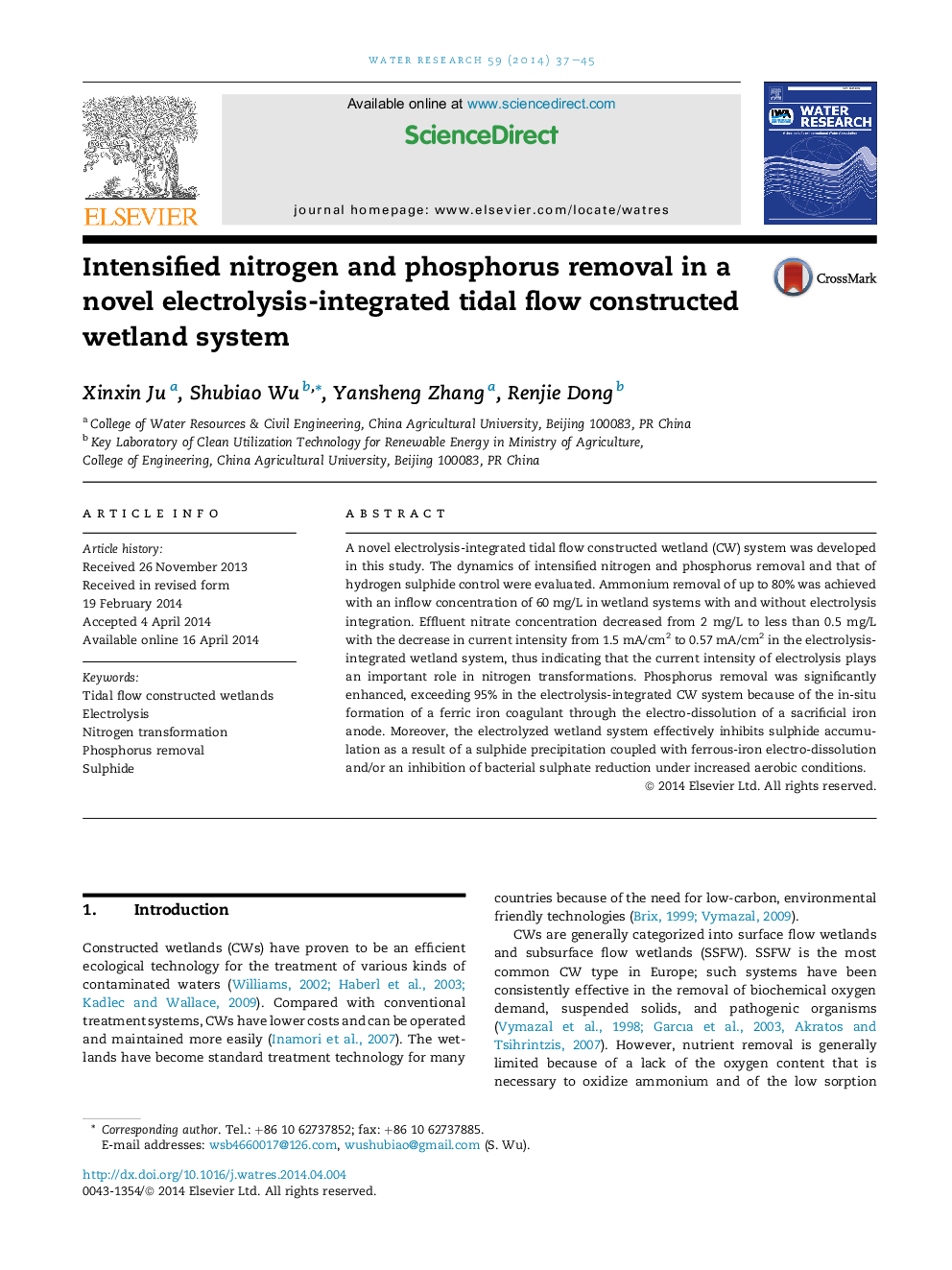| Article ID | Journal | Published Year | Pages | File Type |
|---|---|---|---|---|
| 4481524 | Water Research | 2014 | 9 Pages |
•A novel electrolysis-integrated tidal flow constructed wetland (TFCW) was developed.•Current intensity plays a vital role on nitrogen transformations in electrolyzed CW.•Significant intensified phosphorus removal was demonstrated in electrolyzed CW.•Integration of electrolysis in tidal operated CW effectively inhibited sulphide accumulation.•The interaction among N, P, S and Fe in electrolyzed TFCWs deserves further research.
A novel electrolysis-integrated tidal flow constructed wetland (CW) system was developed in this study. The dynamics of intensified nitrogen and phosphorus removal and that of hydrogen sulphide control were evaluated. Ammonium removal of up to 80% was achieved with an inflow concentration of 60 mg/L in wetland systems with and without electrolysis integration. Effluent nitrate concentration decreased from 2 mg/L to less than 0.5 mg/L with the decrease in current intensity from 1.5 mA/cm2 to 0.57 mA/cm2 in the electrolysis-integrated wetland system, thus indicating that the current intensity of electrolysis plays an important role in nitrogen transformations. Phosphorus removal was significantly enhanced, exceeding 95% in the electrolysis-integrated CW system because of the in-situ formation of a ferric iron coagulant through the electro-dissolution of a sacrificial iron anode. Moreover, the electrolyzed wetland system effectively inhibits sulphide accumulation as a result of a sulphide precipitation coupled with ferrous-iron electro-dissolution and/or an inhibition of bacterial sulphate reduction under increased aerobic conditions.
Graphical abstractFigure optionsDownload full-size imageDownload high-quality image (244 K)Download as PowerPoint slide
